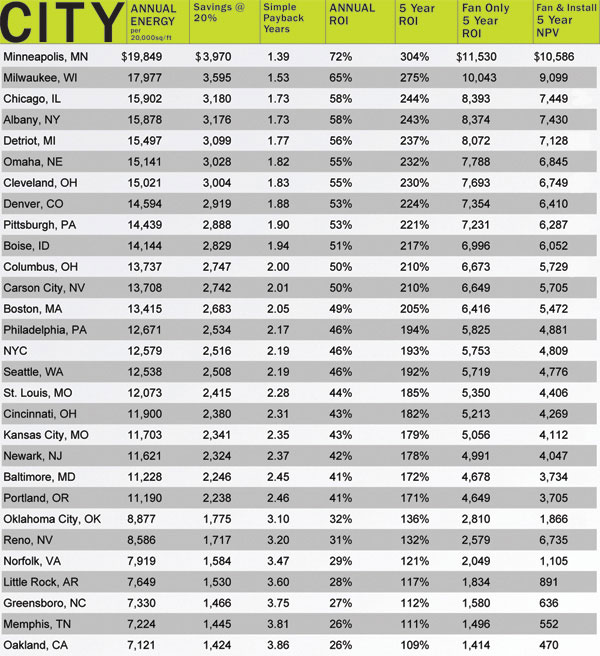HVAC for Large Spaces: The Sustainable Benefits of HVLS (High Volume/Low Speed) Fans
APPLICATIONS
Boyd's original challenge was to help create an efficient system to cool dairy cattle in California (dairy cattle stop eating when they suffer from heat stress, with the result that milk production slows or ceases). Yet HVLS fans have multiple applications, including cooling in commercial, manufacturing, and distribution facilities,
schools, government buildings, and innumerable one-of-a-kind spaces - plus the capability to interface with most building management systems. When used with traditional heating systems, they contribute energy savings, especially in colder regions. Some areas have special utility incentives that may be available after installing energy-efficient HVLS fans.
Installation basics
• HVLS fans are best suited where ceilings are at least 15 ft high.
• Allowance for fan clearance: 3 ft but 5 ft is optimal
• Allowance for blade clearance: 15% of fan diameter or more
• Power source: 208-230 single or three phase, 480 volt three phase
The solar fan does not need line power or grid power.
For a 100,000 sq. ft. facility, typically five to ten fans will provide optimal airflow and coverage. Most manufacturers have engineers on staff who will estimate fan needs according to the requirements of individual facilities. (See chart "Typical Fan Diameters and Specifications" on page 9)
Manufacturing, assembly, and production
In these types of facilities, HVLS fans offer several benefits. Their cooling and destratification effects can improve employee comfort in all kinds of seasons while reducing the need for heating or air conditioning. Their ability to effectively circulate air provides efficient removal of light airborne contaminants such as smoke, reducing the load on air handling equipment. The slow moving air they produce provides these other benefits without the detriment of disturbing papers and settled dust and particulate debris.
 |
Heat savings is based on ASHRAE data (city-specific heating degree days, current natural gas cost estimates per BTU ($11.30 per 1000 cu ft), conservative facility design criteria and a ceiling height of 20-ft). Return on investment (ROI) and net present value (NPV) assumes an installed cost of $5,500 per fan and an annual interest rate of 6 percent. No energy cost increase over five years is assumed. Actual installed fan costs per 20,000 sq ft of facility may vary. Image courtesy of MacroAir Technologies |









